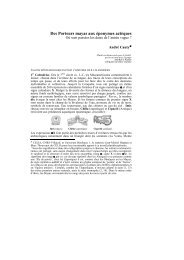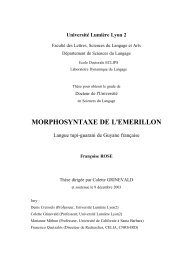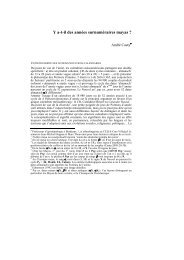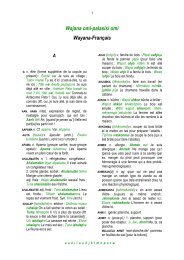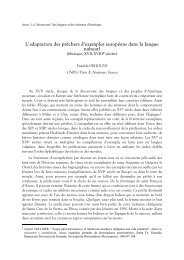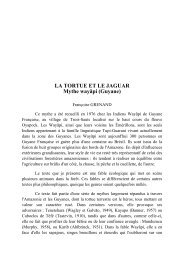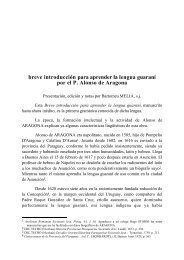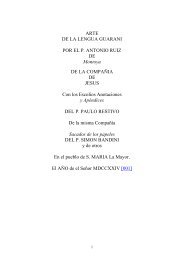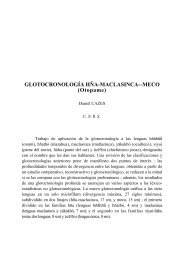The Blue Bird of Ergativity - celia
The Blue Bird of Ergativity - celia
The Blue Bird of Ergativity - celia
Create successful ePaper yourself
Turn your PDF publications into a flip-book with our unique Google optimized e-Paper software.
But there is a basic problem which this characterization fails to address.Where I have characterized ergative marking as "optional", it serves a discoursepragmaticfunction, serving to place the argument which it marks in focus(Tournadre 1991, 1996). In other words, while its distribution is sensitive totransitivity, in any sense <strong>of</strong> that word, it simply cannot be interpreted as serving todistinguish transitive from intransitive clauses, which in fact it does not consistentlydo. <strong>The</strong> primary function <strong>of</strong> ergative marking seems to be to mark a discoursepragmatic,rather than a semantic or syntactic, category. This places the function <strong>of</strong>ergative marking in Tibetan in stark contrast to that in Mizo, where it is simplyalways present under appropriate syntactic conditions.It is likely that the ergative constructions in Tibetan and Mizo have similardiachronic origins. But, synchronically, the functions <strong>of</strong> the ergative in the twolanguages have virtually nothing to do with one another -- one serves to indicategrammatical relations, the other to mark a particular discourse-pragmatic category.<strong>The</strong>re is no point in considering them to be examples <strong>of</strong> the same linguistic type. Infact, Tibetan is much more usefully compared with "nominative" languages inwhich case marking serves a similar pragmatic function, such as Burmese (So1999) or Meithei (Chelliah 1997).Deictic categories: Person-based "split ergativity"Besides languages like Hindi, which show ergative marking in sometense/aspect constructions and nominative patterns in others, there is another wellknown"split" ergative pattern in which 3 rd person A arguments take transitivemarking, while 1 st and 2 nd A's do not. In DeLancey 1981 I argued that this kind <strong>of</strong>system is a direct grammatical reflection <strong>of</strong> the category <strong>of</strong> deixis, and is moreappropriately analyzed as a version <strong>of</strong> inverse marking than as anything related tocanonical ergativity. A few years after the publication <strong>of</strong> that paper, I was madeaware (originally by Noel Rude) <strong>of</strong> a language in which the deictic basis for "splitergative" marking is even clearer and more explicit than in the languages I hadexamined previously. This is Sahaptin, which with Nez Perce is one <strong>of</strong> the twoSahaptian languages <strong>of</strong> Oregon, Washington, and Idaho. (Sahaptian is part <strong>of</strong> thePlateau Penutian family. For further information on the language see Rigsby andRude 1996; see also Zúñiga 2003 for an analysis along the lines suggested here).In (21) and (22) we see that Sahaptin has a suffix, -in, which markstransitive A but not intransitive S:21) iwinsh i-winá-na '<strong>The</strong> man went'10



